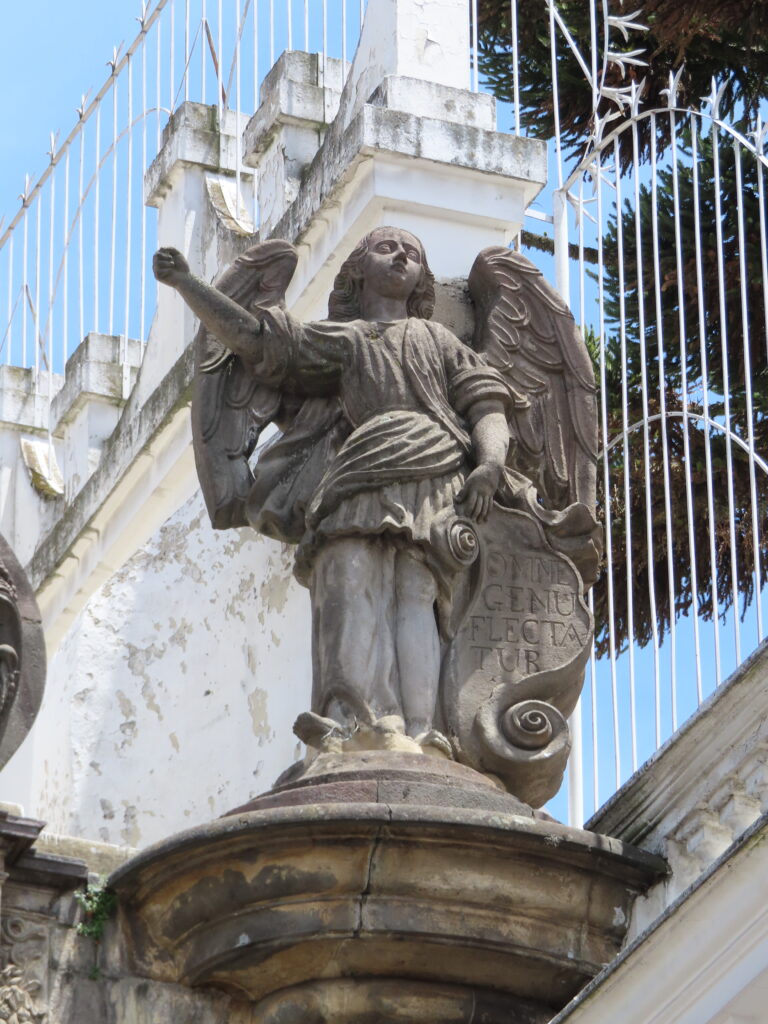El frontispicio de la Iglesia de la Compañía de Jesús, iniciado en 1722 por el padre Leonardo Deubler y concluido en 1765 por el hermano Venancio Gandolfi, es una de las más notables expresiones del barroco quiteño. Construido en piedra volcánica gris, se organiza como un retablo con tres puertas, columnas salomónicas de cinco metros decoradas con guirnaldas, y pilares corintios con detalles renacentistas. En sus nichos y relieves se integran imágenes de la Inmaculada Concepción, San Ignacio de Loyola, santos jesuitas y bustos de los apóstoles Pedro y Pablo, rodeados de ángeles, querubines y símbolos religiosos como el IHS y los Sagrados Corazones.
La parte superior está coronada por una gran ventana central, cartelas ornamentadas y figuras de arcángeles con inscripciones, además de la Custodia jesuítica de bronce que remata el conjunto. En el exterior resalta una cruz de piedra con proporciones monumentales, mientras que la cúpula del crucero se eleva sobre un tambor calado con ventanas y una elegante linterna, rodeada de barbacanas medievales. El antiguo campanario, en su tiempo la torre más alta de Quito, fue destruido por los terremotos de 1859 y 1868, pero su estilo medieval aún se mantiene como símbolo de la grandeza y resiliencia de este templo barroco.

The frontispiece of the Church of the Society of Jesus, begun in 1722 by Father Leonardo Deubler and completed in 1765 by Brother Venancio Gandolfi, is one of the most notable expressions of Quito Baroque. Built in gray volcanic stone, it is organized as an altarpiece with three doors, five-meter Solomonic columns decorated with garlands, and Corinthian pillars with Renaissance details. Its niches and reliefs feature images of the Immaculate Conception, Saint Ignatius of Loyola, Jesuit saints, and busts of the apostles Peter and Paul, surrounded by angels, cherubs, and religious symbols such as the IHS and the Sacred Hearts.
The upper part is crowned by a large central window, ornate cartouches, and figures of archangels with inscriptions, in addition to the bronze Jesuit Monstrance that completes the ensemble. The exterior features a monumental stone cross, while the transept dome rises above an openwork drum with windows and an elegant lantern, surrounded by medieval barbicans. The old bell tower, once the tallest tower in Quito, was destroyed by the earthquakes of 1859 and 1868, but its medieval style remains as a symbol of the grandeur and resilience of this Baroque temple.
